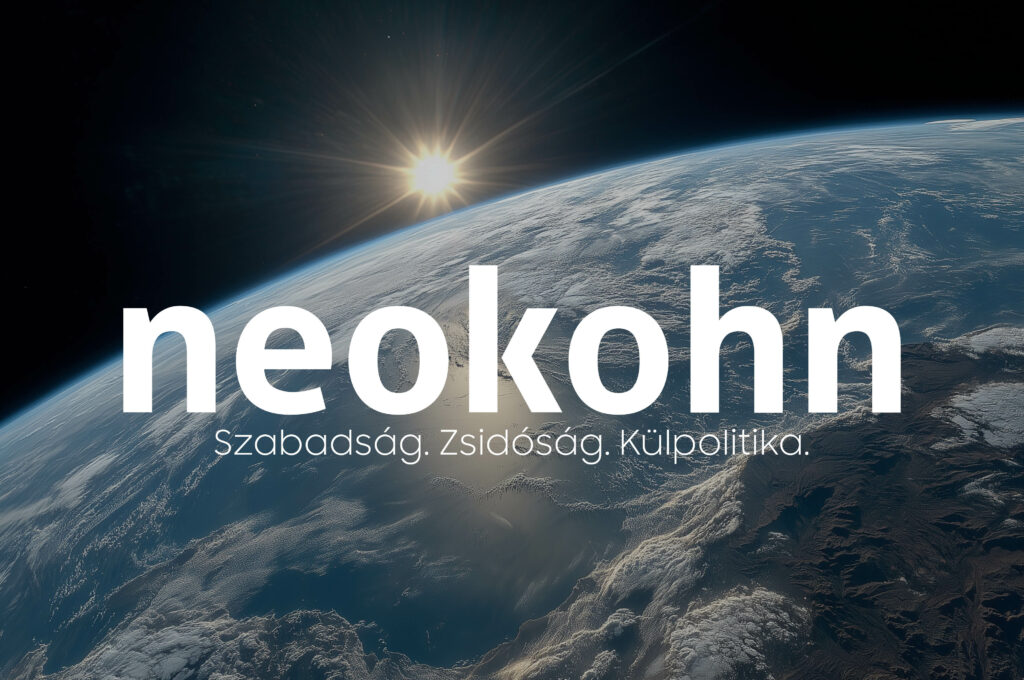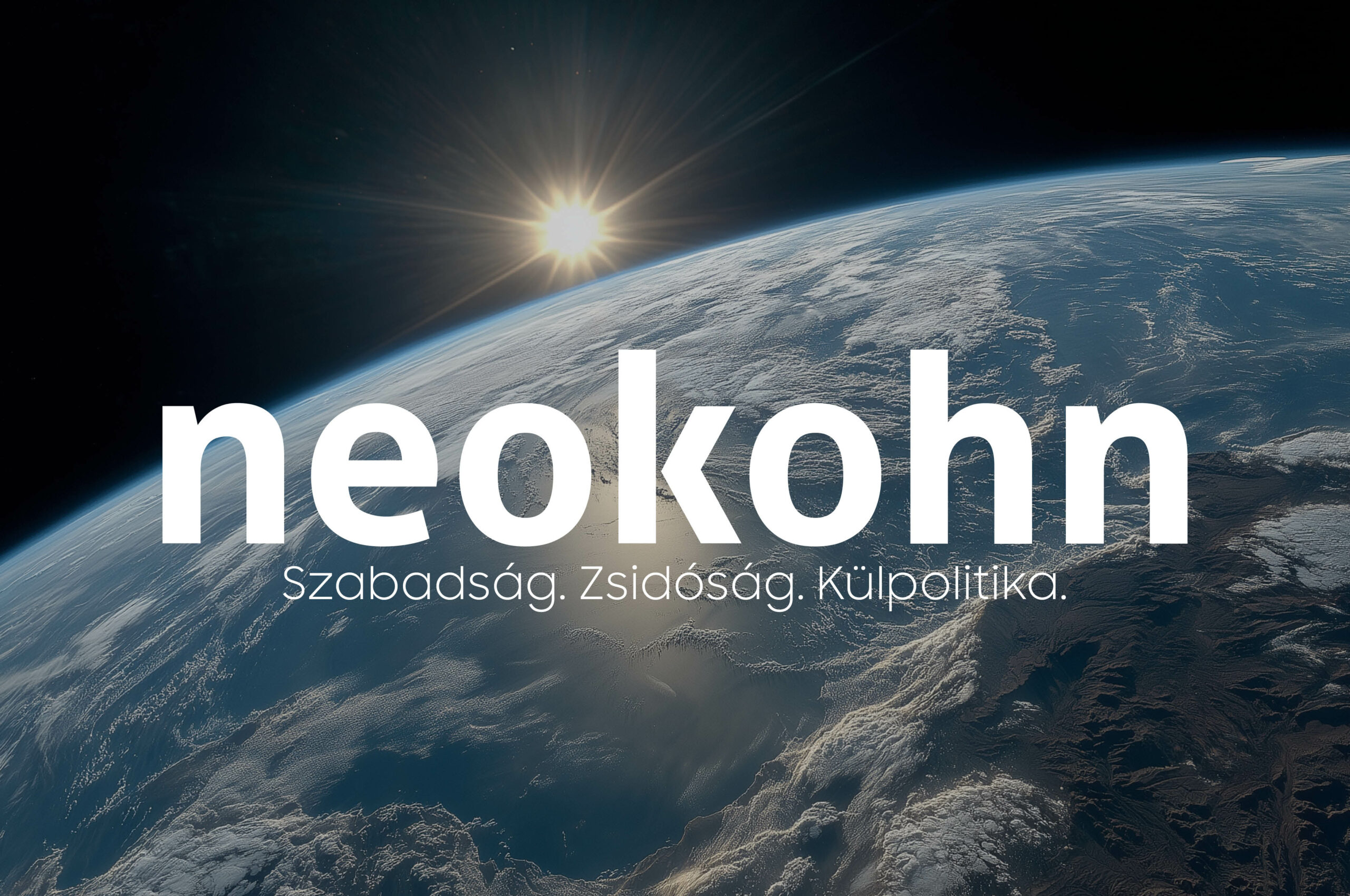The Hungarian president visited the synagogue in Mád, built in 1795, on the occasion of the upcoming Jewish New Year.
Katalin Novák visited the Tokaj hills, where she took part in several events, most of which included visits to the rich vineyards and wineries of Mád, as well as, among other places, the Mád synagogue.
In the synagogue and the rabbinical house, Rabbi Shlomo Köves, Rebbe Dvora Köves and their daughter Rochie Köves, as well as Gábor Tóth, head of the cabinet at the Association of Hungarian Jewish Communities (EMIH), accompanied the president, showing her the Jewish past and present of Mád. They also discussed the booming Jewish tourism in Tokay-Hegyalja, which EMIH has helped flourish in recent years. It is worth mentioning that the rabbinical house and the inn are visited by thousands of non-Jewish guests every year; these visitors get to know not only the Jewish heritage of Mád, but also Judaism in general with the help of Mariann Frank, the head of the Jewish house in Mád.
It is nothing new that the hilltop of Tokaj is a popular pilgrimage site, with many Jews coming to pray at the tombs of the great Tzaddikim from abroad and from within the country, but previously there was no infrastructure to meet the needs of Jewish life.
Today, thanks to EMIH, there is a kosher kitchen, accommodation and a synagogue.
The visit concluded with a kosher lunch, where there was an informal discussion on Rosh Hashanah, the Jewish New Year, which starts on the evening of September 25 this year and decides the fate of the whole world, according to Jewish tradition. The Torah calls Rosh Hashanah „the day of the blowing of the shofar,” and the central mitzvah of the holiday is hearing the sound of the shofar.
On this occasion, the Chief Rabbi Köves presented Katalin Novák with a shofar as a gift, which she managed to sound on the first try, a great achievement.

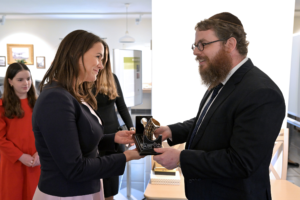

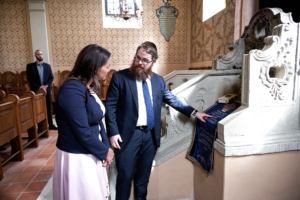
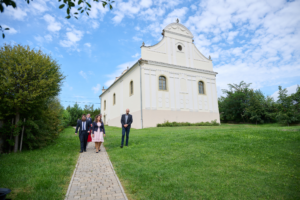
Mád was one of the religious centers of the Tokaj-Hegyalja region, with its 18th-century Baroque synagogue of unparalleled beauty and its famous yeshiva, which gave Hungary more than one great rabbi. The Jewish community, made up of wine producers and merchants, lived in peace with the Christian population and enjoyed good neighbourly relations until the 1940s. But the World War swept away the Jewish community of Mád. Barely 40 Jews returned from the hell of war and, despite their vain efforts to rebuild their community, the Jewish community of Mád ceased to exist by 1956. Their beautiful synagogue and rabbinical house were destroyed. But in 2000, the process was halted and the restoration of the synagogue began.
The building, which has also been awarded the Europa Nostra prize, has been selected as one of the 100 most beautiful synagogues in the world.
In 2012, the synagogue became the property of the Association of Hungarian Jewish Communities (EMIH). From here, a new chapter in the memory of Mád’s Jewish community begins: As the second phase of the North-Hungarian Pilgrimage Route project, Mád has become the center of a new project called “Footsteps of the Wonder Rabbis.”

